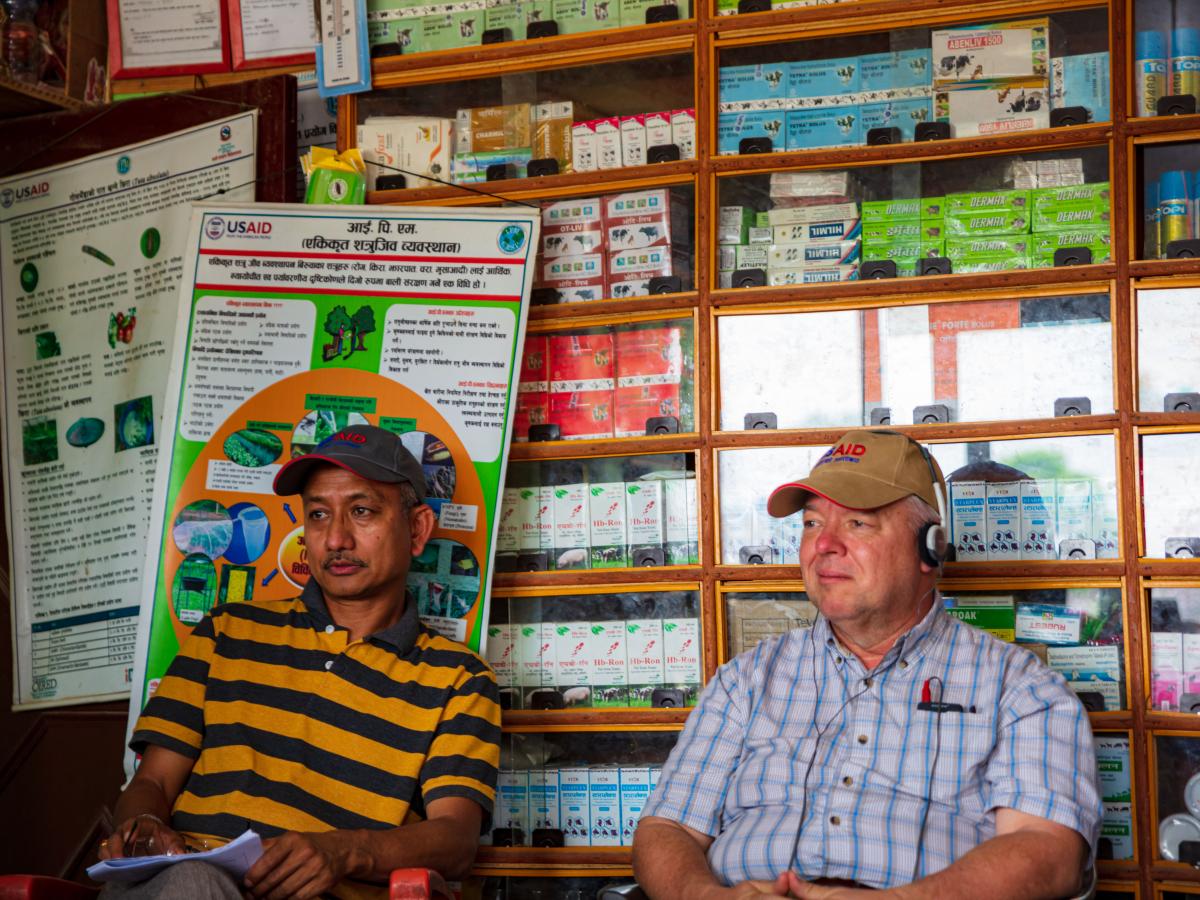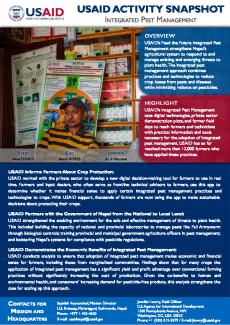Integrated Pest Management
2019 - 2023 | Virginia Tech | $1.4 Million Funding
OVERVIEW
USAID’s Feed the Future Integrated Pest Management strengthens Nepal’s agricultural system to respond to and manage existing and emerging threats to plant health. The integrated pest management approach combines practices and technologies to reduce crop losses from pests and diseases while minimizing reliance on pesticides.
HIGHLIGHT
USAID’s Integrated Pest Management uses digital technologies, private sector demonstration plots, and farmer field days to reach farmers and technicians with practical information and tools necessary for the adoption of integrated pest management. USAID has so far reached more than 12,000 farmers who have applied these practices.
USAID Informs Farmers About Crop Protection:
USAID worked with the private sector to develop a new digital decision-making tool for farmers to use in real time. Farmers and input dealers, who often serve as frontline technical advisors to farmers, use this app to determine whether it makes financial sense to apply certain integrated pest management practices and technologies to crops. With USAID support, thousands of farmers are now using the app to make sustainable decisions about protecting their crops.
USAID Partners with the Government of Nepal from the National to Local Level:
USAID strengthened the enabling environment for the safe and effective management of threats to plant health. This included building the capacity of national and provincial laboratories to manage pests like Fall Armyworm through biological controls; training provincial and municipal government agriculture officers in pest management; and bolstering Nepal’s systems for compliance with pesticide regulations.
USAID Demonstrates the Economic Benefits of Integrated Pest Management:
USAID conducts analysis to ensure that adoption of integrated pest management makes economic and financial sense for farmers, including those from marginalized communities. Findings show that for many crops the application of integrated pest management has a significant yield and profit advantage over conventional farming practices without significantly increasing the cost of production. Given the co-benefits to human and environmental health, and consumers’ increasing demand for pesticide-free produce, this analysis strengthens the case for scaling up this approach.


